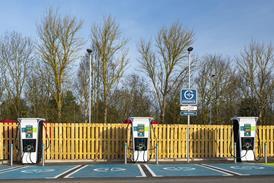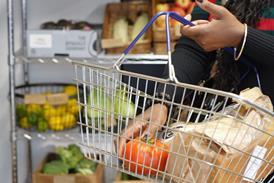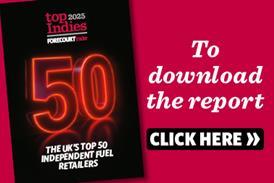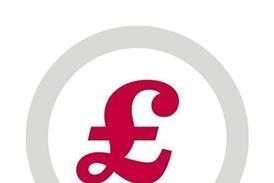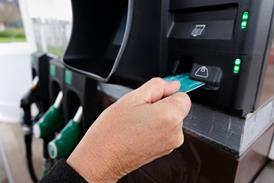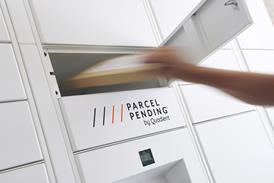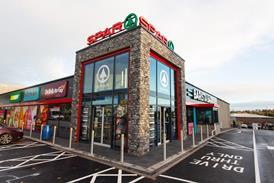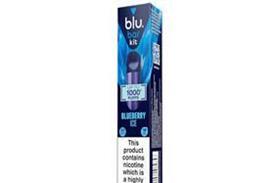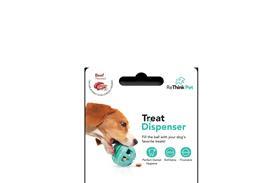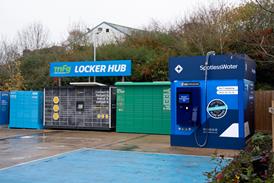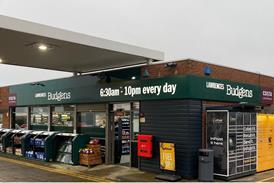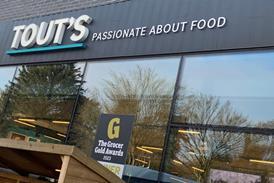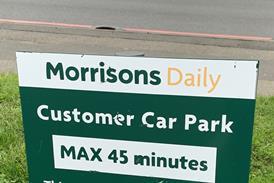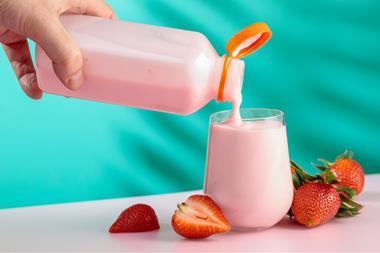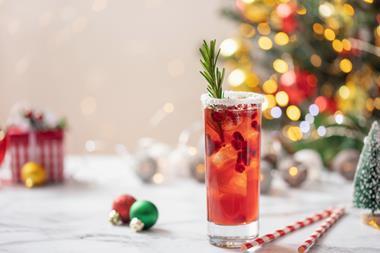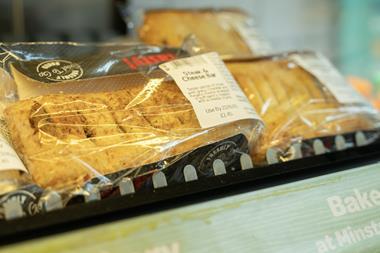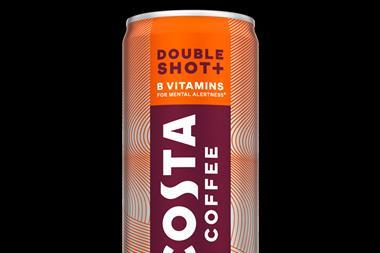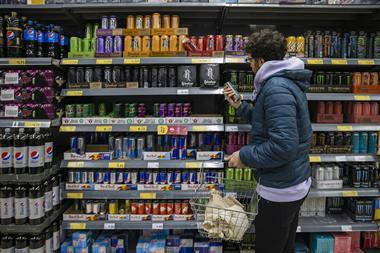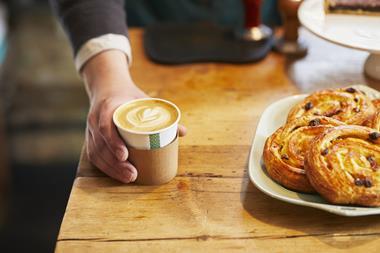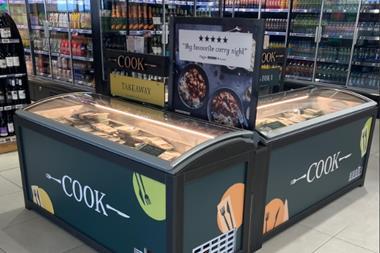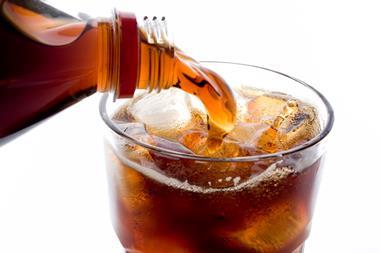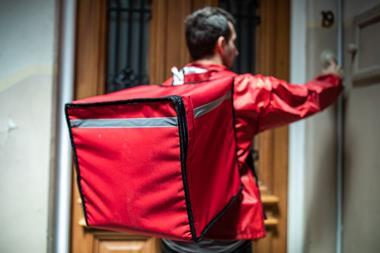1. BUBBLE TROUBLE: Will healthy living pushback carbonates?
2. LIMITED UNLIMITED: Adding buzz with launches like Pepsi Cream Soda and Tango Strawberry Smash
3. ADULTS ONLY: Non-drinkers look for alcohol alternatives
4. HERE COMES THE SUMMER: Barbecue season sparks sales
5. HEALTHY PROFITS: Low- and zero-sugar continues to make inroads
6. APPEALING TO Z: Tango Blast among the launches targeting 13- to 28-year-olds
7. GOING FOR PROMOTION: Making a bundle from meal deals
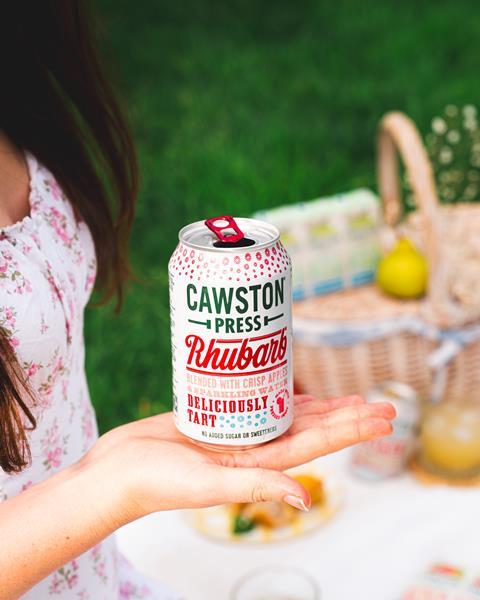
1. BUBBLE TROUBLE: Will healthy living pushback carbonates?
Thanks to familiar flavours, trusted brands, and their ability to instantly bust a thirst with a quick purchase, carbonated drinks have fizzed for convenience retailers for decades. But do upcoming rules on promoting sugary products, demographic changes, and maturing consumer tastes threaten to turn this lucrative category flat?
Not according to suppliers and forward-thinking retailers who hope that exciting new, often limited-edition lines, as well as imaginative merchandising and promotions, can maintain the effervescence in the market.
Oliver Blake, operations director of Hull-based Oasis Services, is typical of those retailers for whom carbonates are crucial to their convenience offering. “They make up 50% of our top 20 selling soft drinks,” he notes, with 500ml variants of Dr Pepper, Diet Coke, and Coca-Cola his best sellers.
Fizzy drinks make up around two-fifths of overall cold beverage transactions at Goran Raven’s Budgens store in the Essex village of Abridge, with the “globally recognised” brands – Coca-Cola, Diet Coke, Fanta, and Sprite – consistently the most popular.
Industry analysis firm Mintel is optimistic about the sector, predicting a 30% value growth by 2028. However, it points out as challenges a decline in the 20-35-year-old population, the introduction of so-called High Fat, Sugar or Salt (HFSS) restrictions in October, and a push back against products perceived to be unhealthy.
Environmental awareness is another factor, with 40% of consumers put off by single-use plastic packaging, according to a Mintel survey. The introduction of deposit return schemes across the country may go some way to addressing this.
Another opportunity for the convenience sector to win back sceptical customers could be introducing self-service refills, with nearly 60% of carbonates drinkers positive about the prospect of replenishing their own bottle or container, finds Mintel’s research.
From the drift to lower-sugar alternatives, an explosion of new flavours, and the rise of adult-oriented brands to advice on merchandising, here are six more trends to consider when coming up with a retail strategy for the carbonated drinks category.
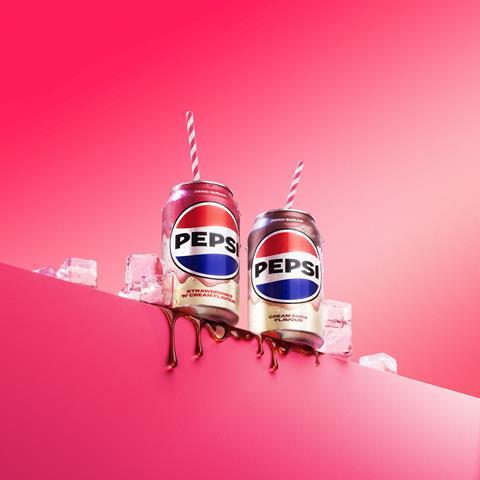
2. LIMITED UNLIMITED: Adding buzz with launches like Pepsi Cream Soda and Tango Strawberry Smash
While among the recognisable brands and varieties, it is difficult for launches to stand out, limited-time arrivals have added dynamism to what could be a staid market. Mintel research finds that 57% of buyers and almost 70% of 16-34-year-olds are prompted by these shorter life varieties to try carbonated soft drinks from brands they do not usually buy.
Publicity around new flavours can also add a buzz. The Mintel survey discovers that just under three-quarters of 16-34-year-olds have been tempted to seek out a new variant they have heard about, with retro and cocktail-inspired flavours and collaborations with other food and drink brands key drivers.
It is important to remember that limited editions are exactly that – shelf life is short. When Blue Pepsi was launched last year, Oasis Services sold over 10 cases in the first week before sales began slowing after a month and Blake just about managed to clear his stock.
Goran Raven has high hopes for the arrival of Pepsi Cream Soda and Pepsi Strawberries ‘N’ Cream this year, particularly with cream soda’s association with 1970s nostalgia. However, he finds limited editions “hit and miss” and has on occasion ended up stuck with unwanted product.
“Some of it flies off the shelf and other products go out of date,” says the forecourt retailer. “It’s so locally market dependent. What sells here might not in another shop in the next town and vice versa.”
Tom Buckley of Pricewatch Group tends to avoid limited edition lines as he finds they simply cannibalise existing sales. “When Coke pushed new flavours, we stocked them. But with fridge space limited, we stick to the best sellers. We often find with limited editions it’s a replacement, not an incremental purchase, so you don’t gain anything.”
Unsurprisingly, suppliers stand by the limited-edition potential. “Flavour innovation is critical to maintaining shopper engagement in a category full of choice,” says Ben Parker, Carlsberg Britvic’s vice president sales, off trade. “New product development is key, enticing shoppers to come into store in search of the latest launches and encouraging impulse purchases.”
In February, Carlsberg Britvic’s Tango brand unveiled its latest Strawberry Smash strawberry and pineapple flavour, which it says will be available for a year in 330ml cans, 500ml bottles and multipacks. It launched the Tango Editions “rotational flavour” series in 2021.
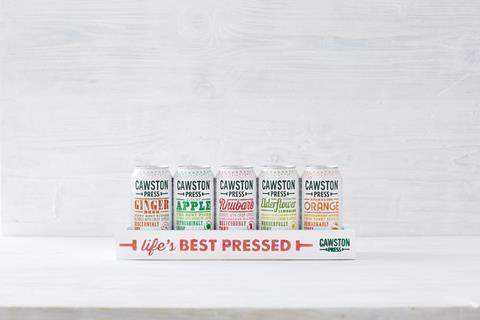
3. ADULTS ONLY: Non-drinkers look for alcohol alternatives
Carbonated drinks for discerning grown-ups have been a definite trend in the market for some years, with Cawston Press, the maker of the no-added-sugar, not-from-concentrate range, insisting that consumers are willing to pay more for high quality, sophisticated drinks, and anticipating “remarkable growth” from the segment.
The sub-category also plays a role for the increasing number of adult drinkers looking for tasty alternatives to alcohol, especially during the summer, maintains its managing director Steve Kearns. “Although consumers are looking to cut out alcohol, they don’t want to miss out on an enjoyable drink experience,” he says.
Kearns also points out that certain flavours have become unexpected successes. “We launched Sparkling Rhubarb 10 years ago,” he says. “At the time rhubarb flavour was commonly found in the likes of puddings and yoghurts. Now it is our most popular flavour.”
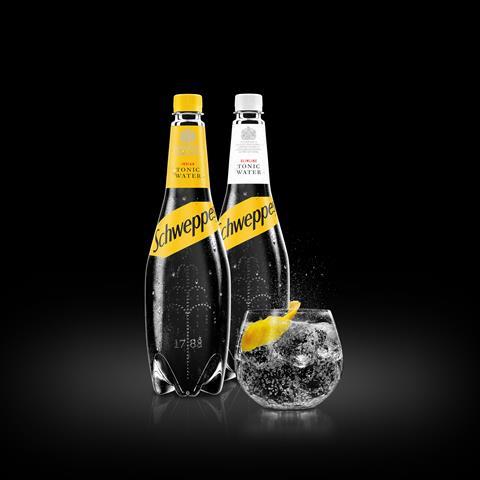
4. HERE COMES THE SUMMER: Barbecue season sparks sales
The warmer months traditionally see carbonated drinks sales soar, with barbecue season and the plethora of sporting occasions and musical festivals boosting the market’s potential from May through to September.
The advice from Kate Abbotson, senior external communications manager at Coca-Cola Europacific Partners (CCEP), is to ensure a broad availability of colas, mixers and adult soft drinks. Festival goers increasingly bringing their own drinks to events to save costs also presents an opportunity for nearby stores, she says.
Goran Raven will be creating more space for sharing bottles and multipacks from this month, ahead of Easter and early garden barbecues. “Sales of carbonates can increase by 20% during hot weather,” he states.
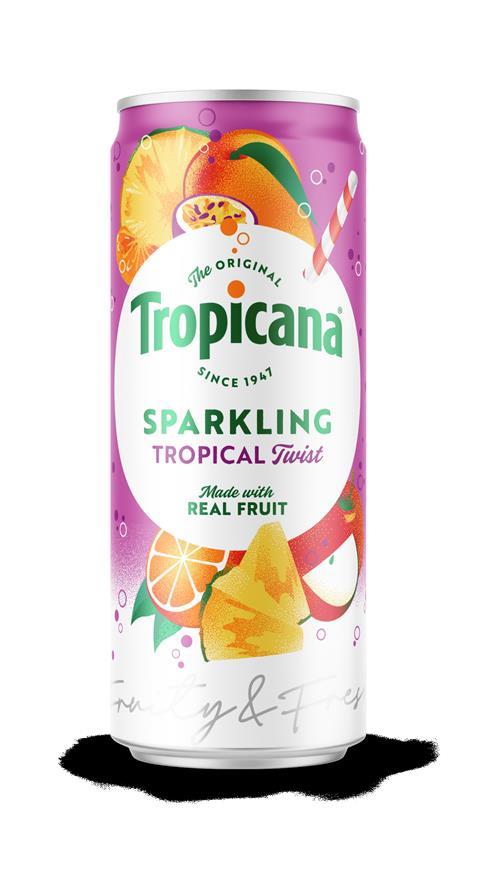
5. HEALTHY PROFITS: Low- and zero-sugar continues to make inroads
While it would be overstating it to say that healthier beverages have overturned the traditional carbonates category, zero-sugar and products perceived to be better for you continue to make inroads. As Oasis Services’ Blake puts it: “Zero-sugar drinks are growing every month as people think about how much sugar and calories they are consuming.”
According to George Tuck, head of sales, impulse at Tropicana, whose line-up includes Tropicana Sparkling, consumers are “actively seeking nutritious products that are low in sugar and free from artificial additives that satisfy their taste preferences as well as their health goals”.
For convenience retailers, fruit juice shoppers are also a “valuable demographic”, says Tuck, spending 25% more per shop and purchasing three more items than the average customer. “Ensuring you can meet consumer demand will unlock a huge opportunity to drive sales,” he says.
Carlsberg Britvic, whose brands include Pepsi and Tango, says 85% of its portfolio in Great Britain and Ireland is now low- or no-calorie. “Our innovation pipeline continues to centre around low- and no-sugar products which meet HFSS regulations and offer consumers better-for-you options,” it says.
The use of artificial sweeteners to meet low sugar stipulations while maintaining taste remains controversial. Cawston Press says that its range shows it is possible to “create soft drinks from simple, wholesome ingredients, free from hidden sweeteners or added sugars”.
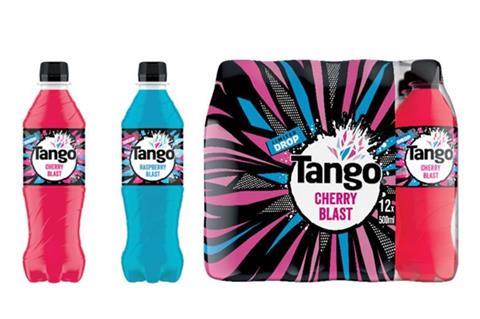
6. APPEALING TO Z: Tango Blast among the launches targeting 13- to 28-year-olds
Generation Z – those aged 13 to 28 – are a key demographic for carbonated drinks on which suppliers remain fixated, with limited ranges such as Tango Blast from Carlsberg Britvic, available exclusively in convenience stores, aimed at engaging Generation Z shoppers with “bold flavours, striking colours and eye-catching packaging”.
The Pepsi Electric blue cola launch last year was similarly focused on younger buyers, as are the Strawberries ‘N’ Cream and Cream Soda zero-sugar varieties, which tap into a “desire particularly among Gen Z” for flavoured cola, says the supplier.
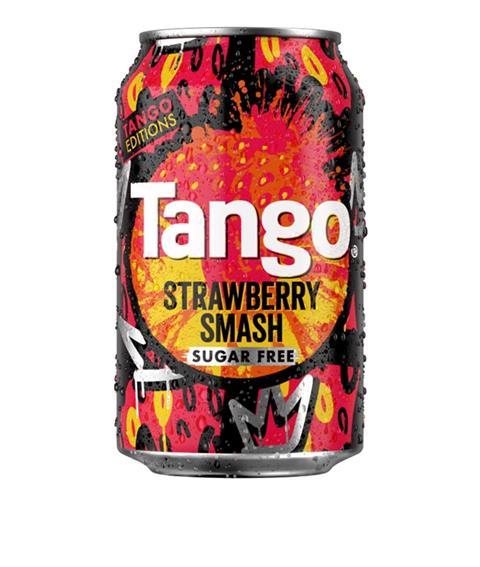
7. GOING FOR PROMOTION: Making a bundle from meal deals
Meal deals involving a carbonated drink are a crucial part of many retailers’ promotional tactics. For Blake at Oasis Services, the products “form the very centre of our meal deals, with eight out of 10 of these bundles having a carbonated drink”.
While Pricewatch Group includes water, squash based drinks, fresh juices, iced coffees and Lavazza coffee at some sites in the meal deals it offers customers, carbonated drinks account for more than 70% of sales, according to Buckley.
CCEP’s Abbotson says that merchandising food and drink together – including sharing packs of soft drinks with snacks and nibbles – is essential to exploit the opportunity of the summer season, in particular.
The advice from Parker at Carlsberg Britvic is to use “eye-catching” point of sale materials to make soft drinks stand out, including shelf trays and window stickers. “By upping their game in soft drinks”, he says, independent retailers can help “readdress any imbalance” with larger players in the market.

